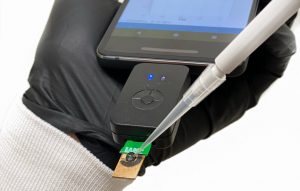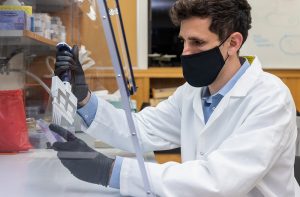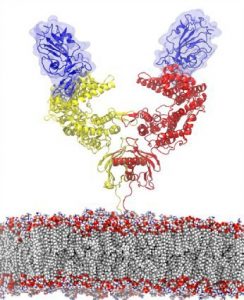by Melissa Pappas

While biologists and chemists race to develop new antibiotics to combat constantly mutating bacteria, predicted to lead to 10 million deaths by 2050, engineers are approaching the problem through a different lens: finding naturally occurring antibiotics in the human genome.
The billions of base pairs in the genome are essentially one long string of code that contains the instructions for making all of the molecules the body needs. The most basic of these molecules are amino acids, the building blocks for peptides, which in turn combine to form proteins. However, there is still much to learn about how — and where — a particular set of instructions are encoded.
Now, bringing a computer science approach to a life science problem, an interdisciplinary team of Penn researchers have used a carefully designed algorithm to discover a new suite of antimicrobial peptides, hiding deep within this code.
The study, published in Nature Biomedical Engineering, was led by César de la Fuente, Presidential Assistant Professor in Bioengineering, Microbiology, Psychiatry, and Chemical and Biomolecular Engineering, spanning both Penn Engineering and Penn Medicine, and his postdocs Marcelo Torres and Marcelo Melo. Collaborators Orlando Crescenzi and Eugenio Notomista of the University of Naples Federico II also contributed to this work.
“The human body is a treasure trove of information, a biological dataset. By using the right tools, we can mine for answers to some of the most challenging questions,” says de la Fuente. “We use the word ‘encrypted’ to describe the antimicrobial peptides we found because they are hidden within larger proteins that seem to have no connection to the immune system, the area where we expect to find this function.”
Read the full story in Penn Engineering Today.






